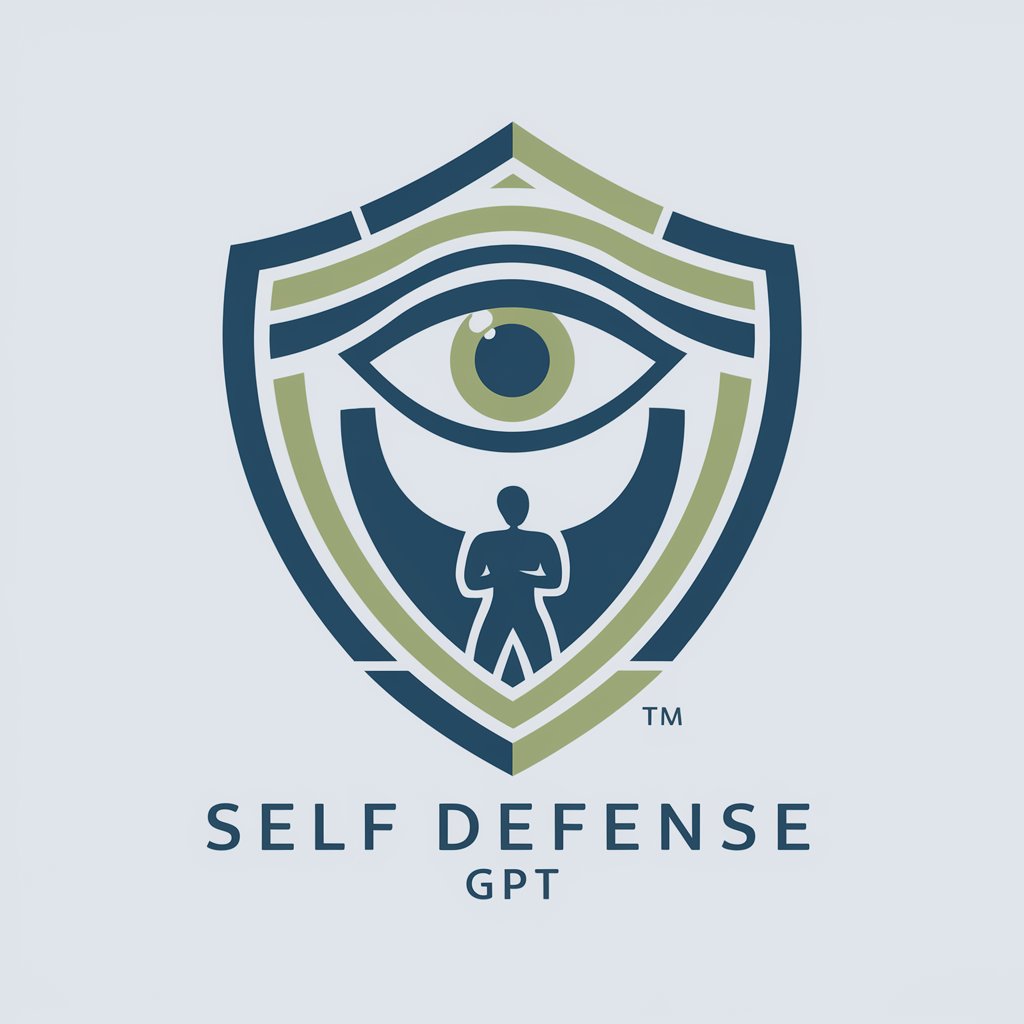Self Defense - Self-Defense Guidance

Welcome! Ready to empower yourself with self-defense knowledge?
Empowerment through AI-driven Self-Defense
What are some effective techniques for...
How can I improve my situational awareness...
What steps should I take to feel safer when...
Can you explain how to defend myself in case...
Get Embed Code
Introduction to Self Defense
Self Defense is designed to empower individuals by providing guidance on personal safety and self-defense techniques. Its primary goal is to educate users on how to protect themselves in various situations through situational awareness, preventative measures, and physical self-defense techniques. For example, it can offer advice on how to remain aware of one's surroundings to prevent dangerous situations, instruct on verbal de-escalation techniques to avoid physical confrontations, and teach basic self-defense moves to use as a last resort if attacked. The system is built on principles of empowerment, safety, and education, aiming to equip users with the knowledge and skills needed to stay safe in potentially harmful scenarios. Powered by ChatGPT-4o。

Main Functions of Self Defense
Situational Awareness Training
Example
Providing tips on being observant and attentive to one's surroundings to identify potential threats early.
Scenario
A user walking home late at night learns to scan the area, avoid distractions like smartphones, and notice people or activities that seem out of place.
Preventative Measures
Example
Advising on how to minimize risk through body language, route planning, and environmental awareness.
Scenario
Teaching users to walk confidently, stay in well-lit areas, and avoid isolated locations to reduce the likelihood of an encounter with an aggressor.
Physical Self-Defense Techniques
Example
Instructing on basic, effective self-defense moves that can be used to escape an attacker.
Scenario
A user learns techniques like palm strikes, knee kicks, and how to break free from various holds during a self-defense class scenario.
Verbal De-escalation Strategies
Example
Offering methods to calm down potentially volatile situations using tone of voice, body language, and choice of words.
Scenario
Guidance on how to de-escalate a confrontation with an aggressive individual in a public setting, focusing on non-threatening behavior and seeking help.
Legal and Ethical Use of Force
Example
Educating users on the legal implications and ethical considerations of using force in self-defense.
Scenario
Explaining the difference between reasonable and excessive force in a self-defense situation, emphasizing the importance of using physical force only as a last resort.
Ideal Users of Self Defense Services
Individuals Seeking Personal Safety Knowledge
People looking to increase their personal safety and awareness in daily situations. This group benefits from learning situational awareness, risk avoidance strategies, and basic self-defense moves.
Victims of Previous Assaults
Individuals who have experienced assault or personal threats in the past and wish to empower themselves to prevent future incidents. They benefit from tailored self-defense training and psychological support to rebuild confidence.
Professionals in High-Risk Environments
People working in security, healthcare, education, or customer service roles where they may face aggressive behavior or threats. They benefit from de-escalation techniques, conflict resolution skills, and understanding the legal aspects of self-defense.
Travelers and Expatriates
Individuals who travel frequently or live in areas with higher crime rates. They benefit from learning how to navigate unfamiliar environments safely, understand cultural differences in behavior, and apply universal self-defense techniques.
Young Adults and College Students
This group is often at risk due to lifestyle and environmental factors. They benefit from campus-specific safety tips, night-time safety strategies, and basic self-defense skills to protect themselves in social or isolated situations.

How to Use Self Defense
Start Your Journey
Begin by visiting yeschat.ai for a complimentary trial, accessible without the need for logging in or subscribing to ChatGPT Plus.
Identify Your Needs
Evaluate your personal safety concerns and self-defense knowledge level to determine the specific areas you wish to improve or learn about.
Explore Techniques
Utilize the platform to explore various self-defense techniques, ranging from physical maneuvers to situational awareness strategies.
Practice Regularly
Incorporate regular practice of the learned techniques into your routine to enhance muscle memory and reaction times in potential threat situations.
Stay Informed
Regularly update your knowledge with the latest self-defense practices and legal considerations relevant to personal safety.
Try other advanced and practical GPTs
Strategic management Professor
AI-powered Global Strategy Expertise

Bestseller Blueprint
Empowering Authors with AI-Driven Success

Beauty Social Media Maestro
Revolutionize Beauty Content with AI

B4A Strategist
Empower Your Brand with AI

Asystent Brands Manago
Optimize your ads with AI power.

Starship Launch
Launch into Learning with AI

Candy
Sweeten Your Knowledge with AI-Powered Candy Insights

Magical Character Maker ✨
Bring Images to Life with AI

startup business plan pro
Empowering Startups with AI-Driven Planning

Utility Comparison
Maximize savings with AI-powered utility insights.

Public Housing
Empowering Communities with AI-driven Housing Insights

Fighting
Empowering Your Fight with AI Knowledge

Self Defense FAQs
What is Self Defense designed to provide?
Self Defense offers guidance on techniques, situational awareness, and preventative measures to empower individuals with the knowledge and skills to protect themselves in various situations.
Can Self Defense help me with non-physical aspects of self-defense?
Yes, apart from physical techniques, it emphasizes situational awareness, threat assessment, and psychological strategies to prevent and de-escalate potential threats.
Is Self Defense suitable for beginners?
Absolutely. It caters to individuals at all skill levels, providing step-by-step guidance tailored to beginners, as well as advanced tips for more experienced users.
How can I apply the techniques learned from Self Defense in real life?
Techniques learned can be applied in real-life by practicing regularly to build confidence and instinctual response, and by staying alert and aware of your surroundings at all times.
Are there any legal considerations I should be aware of when using self-defense techniques?
Yes, it's crucial to understand the legal framework surrounding self-defense in your jurisdiction, including reasonable force and the legal implications of self-defense actions.
